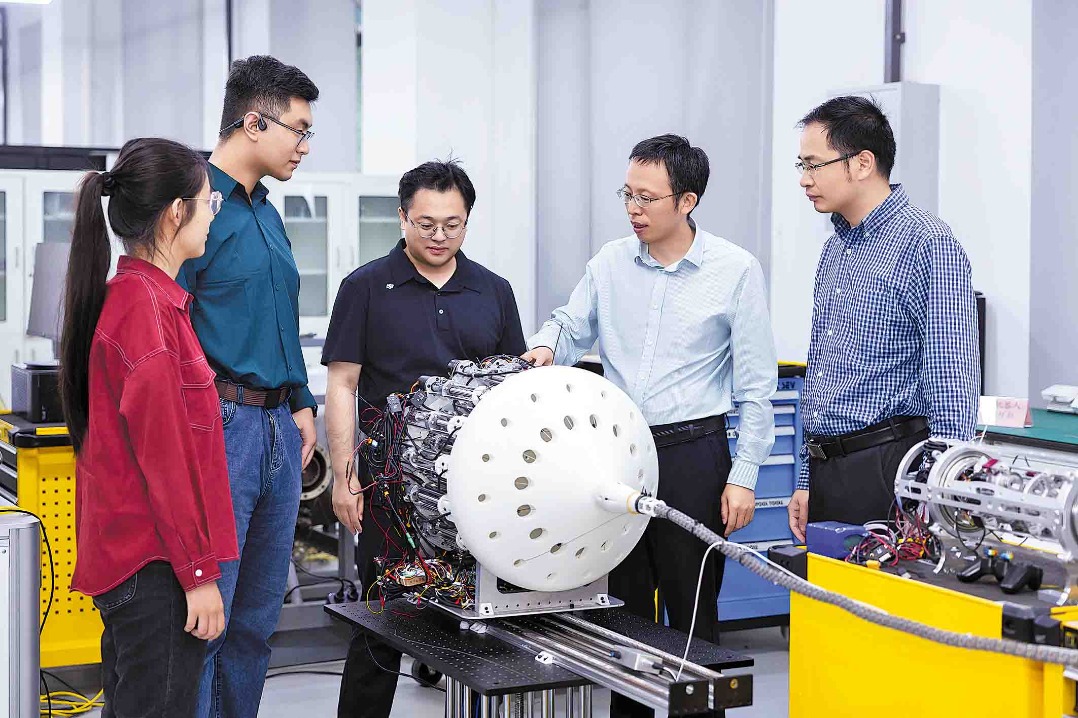Plan to ease the pension pressure


China aims to develop the world's largest multilayered system
China's pension system has been continuously developed since its launch in 1951, with a focus mainly on public pensions. Through seven decades of development, China has made impressive strides in retirement payments, with a public pension coverage of almost 960 million people in 2019. However, the size of the pension in China is still relatively small, mainly due to a lack of a private pensions system that encompasses enterprise annuities, occupational annuities, and pensions for individuals. As it faces a rapidly aging population and traditional family roles change, China is actively improving social security mechanisms for elderly residents, with the aim of developing the world's largest multilayered pension system. KPMG analysis points to several overarching trends affecting the development of China's multilayered pension system in the next few years:
First, China is considering a unique model for its multilayered pension system. This model will integrate public pensions, private pensions and senior care services throughout an individual's life cycle under a risk-monitoring framework adopted by participants. A report by KPMG points out that China's public pension system has been well developed. Nevertheless, the average replacement ratio (pension benefit as a percentage of pre-retirement wage) had declined from 72.9 percent in 2002 to 48 percent in 2018 due to a lack of private pensions to supplement the overall ratio. According to the data of the Ministry of Human Resources and Social Securities and the National Council for Social Security Fund, the scale of public and private pensions of China in 2019 was only $1.85 trillion, which is approximately 12 percent of its GDP, while the percentage was 136 percent in the US and 66 percent in Japan. This may likely leave the Chinese government overburdened by public pensions going forward.
Public pensions-the Public Pension Fund and the Social Security Fund-are the main pension pillar, accounting for about 74 percent of the total scale. It will be a huge challenge to maintain its sustainability as China ages more quickly over the next 30 years. The second pillar-the enterprise annuities and occupational annuities-is comparably less developed, with a size of $480 billion, about 26 percent of the total and covering only 3 percent of the workforce. And the third pillar-individual private pensions-is still in its infancy. KPMG research suggests that the structural reform of China's pension system is imperative, and the aging population will be propelling an increase in demand for investments with sustainable returns and alternative solutions that provide long-term benefits.
Second, pension funds are keystone assets for long-term investment, which are critical for China's growing capital markets. Pensions are one of the most important asset categories of the global assets management market. The study shows that pension funds ($46.7 trillion in 2019) accounted for 51 percent of the total assets under managements among the world's top 22 markets. In addition, with the longer-term nature of their liabilities, pension funds have strong incentives to invest in assets that yield sustainable returns, and ultimately spur long-term economic growth. China has the world's largest middle-income population with approximately $25 trillion in investible capital as of 2020, according to the China Banking and Insurance Regulatory Commission. As such, the potential of individual investment may cultivate a private pension market of $10 trillion, assuming 40 percent of the $25 trillion financial assets being assigned to long-term investment as suggested by the Standard&Poor's family assets quadrant map.
To kick off the development of the multilayered pension system, we see China is accelerating the development of private pensions.
On the one hand, policymakers have been introducing a number of incentives and strong risk-prevention mechanisms to lay a solid foundation for the development of private pensions. Consideration has been given to establishing dedicated regulations for private pensions, including proper and timely execution, transparency, and regular review and assessment under an authorized legal framework.
On the other hand, industry players are vying to compete by reinventing investor services. Major players, including commercial banks, life and pension insurers and senior care services investors, are nurturing private pension businesses in more integrated ways, and have been gauging experience in operations management and data-driven system establishment, product diversification, risk control and customer services. In the context of the emerging health-and-retirement finance and services ecosystem, industry leading players, particularly investment services providers, have been beefing up their ability of actuary, asset allocation, financial advisory and risk reversals to become end-to-end service providers.
In addition, value-added and integrated services such as the B2B2C model with its alliances start a virtuous cycle, thereby boosting cross-selling (which means to sell related or complementary products to an existing customer) opportunities. To better reap the advantage of being a comprehensive service provider, some institutions are also working toward organizational improvement through the implementation of digitization and risk diversification structures.
China's multilayered pension system, especially private pension reform, will take a leap forward during the 14th Five Year Plan (2021-25). With the support of regulators and industry participants at collective and individual levels-along with long-term investments in technology enablement, compliance and sustainability-KPMG estimates that China's private pension system will grow to $10 trillion in the coming five years, and by 2050, China is likely to build one of the world's largest multilayered pension systems.
The author is a partner and the head of Aged Care in KPMG China. The author contributed this article to China Watch, a think tank powered by China Daily. The views do not necessarily reflect those of China Daily.


































